No matter how many times you have visited the eclectic treasure chest of superb exhibits at the Chester Beatty library in Dublin, it’s certain you have seen only a tiny fraction of the collection. Although items in the galleries are periodically changed, only 2 per cent of the entire collection is on site at any one time. The rest is kept in secure storage at an undisclosed location, which has never been publicised due to the value of the multi-million euro collection.
Now some of those items are coming out of storage to go on display for the first time. A new exhibition, Chester Beatty's A to Z: from Amulet to Zodiac, showcases some previously unseen items from storage with a range of key pieces from the collection. "We spent about a year putting it together," says director Fionnuala Croke.
A is for Amulet.
A small object, usually worn on the body to protect the wearer from various evils.
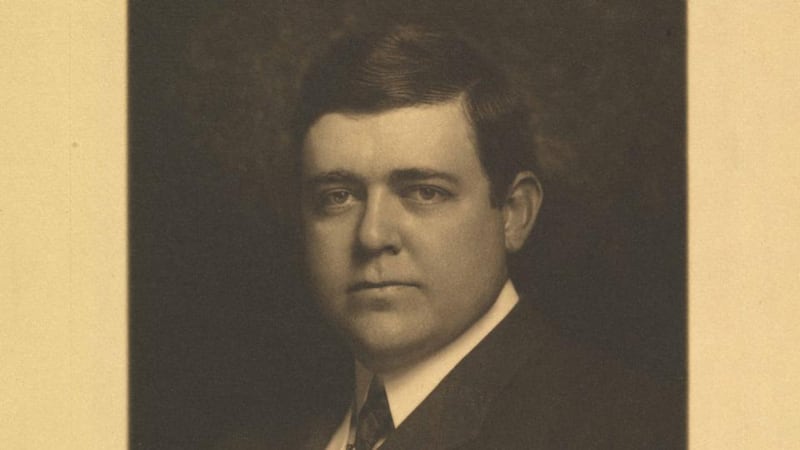
B is for Alfred Chester Beatty.
There would be no glorious library without the generosity of this extraordinary man, who left his collection to the nation when he died. Among the previously unseen photographs on display is one of him surrounded by the football team he played for when in Columbia University in 1898, and it's also signed by him. There is also a striking portrait of his first wife, Ninette Rickard, with their two children. No photographs have yet been found that depict all four together, because, as Croke explains, "He was always travelling."
C is for Calligraphy.
In Islam, calligraphy is the most highly regarded art form.
D is for Demon.
In Islamic tradition, the demon is a non-human creature that lives within, but normally in opposition to, the world of men.
E is for Embroidery,
which often covered devotional works and almanacs. The decorated fabric was glued or stitched to the boards of a bound volume.
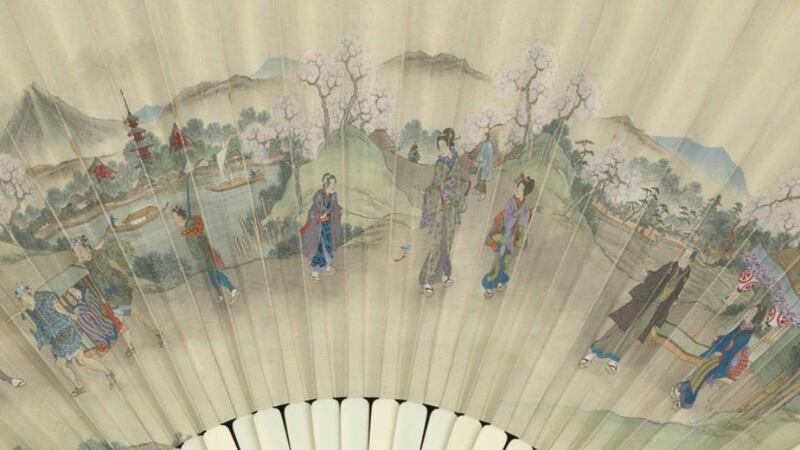
F is for Fan.
There are three fans on display, two Chinese-made and one Japanese, and each is an exquisite piece of art. One is mother-of-pearl, with carvings delicate as lace, depicting boats, pagodas and rural scenes. One is tortoiseshell, carved with figures of scholars. They are both brisé fans, which means each segment is carved from a single piece of mother of pearl or ivory; a rarity due to their scarcity and high cost. The Japanese fan is painted on both sides; on one side with a detailed cherry blossom viewing scene and the reverse with chrysanthemums. The fan guards are ivory, inlaid with tiny jewelled birds and flowers.
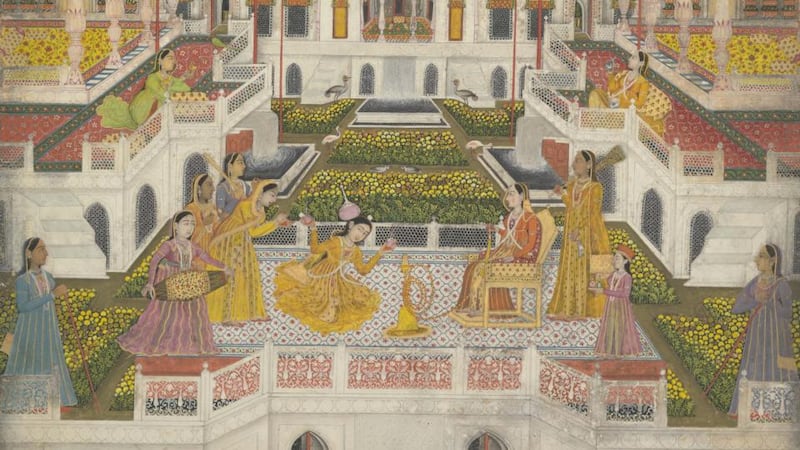
G is for Garden.
Remember the
New Yorker
cover, view of the world from 9th Avenue? Where the perspective went on forever, over oceans? An 18th century Indian painter was already doing the same thing. This Indian painting of a garden and terraces disappearing into horizons of ever-tinier scenes of gardens seems to cover continents. This is on view for the first time.
H is for Hours.
Illuminated Books of Hours were produced for private devotion and contained a series of short services, designed to be read at different times of the day.
I is for Illumination.
Illuminated manuscripts, albums and scrolls make up most of the Chester Beatty collection.
J is for Jade.
Considered to be the most powerful and mystical material used in Asian art. Beatty collected more than 950 snuff bottles, many of them jade.
K is for King.
Islamic collections feature many items made for and depicting (male) royalty, be they kings, princes, sultans, shahs and padshahs.
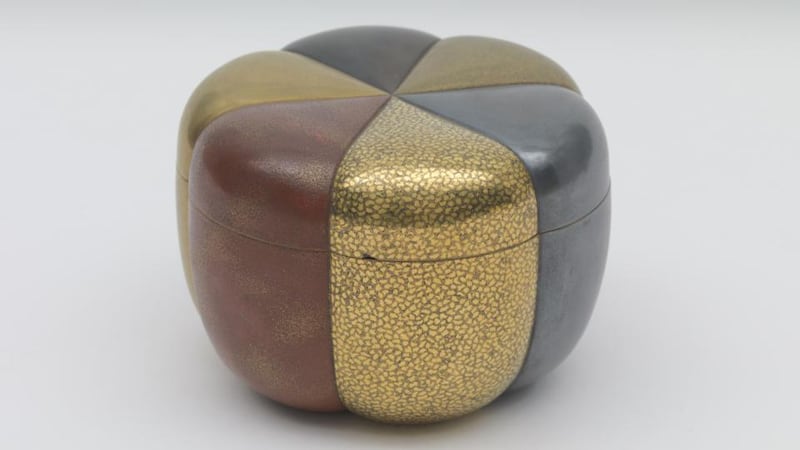
L is for Lacquer.
There are five gold-lacquer Japanese 19th century incense boxes on show for the first time. The one that charmed the Chester Beatty curators the most when they found it is a box that shows a serene-looking monkey holding a peach. One of the others of this lovely quintet is a box in the shape of a lute, with more musical instruments picked out in gold on the underside of the lid. Another is a box in the form of a bundle of scrolls, all carefully picked out in different colours.
M is for Mining.
This is how Beatty made his fortune; mining diamonds and copper. Photographs from the library's archive show him at work on various mining projects.
N is for Noh,
the oldest living dramatic form in the world. On display are several masks and a drum.
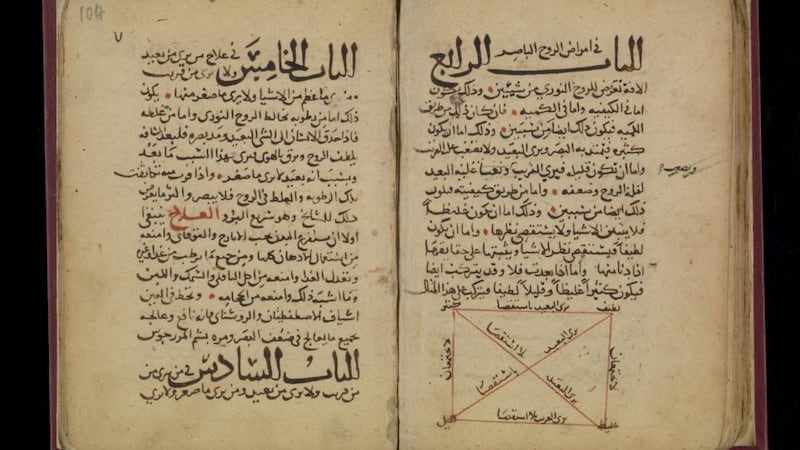
O is for Optics
Down through the ages, our vision has always been highly prized. On display are two 13th century books hand-written in Arabic, which are about optics, which was widely studied by scientists in the medieval Islamic world. Both books are actually copies. One is a copy of a 10th century book about eye diseases. The other is a copy of an 11th century book, written by surgeon Albucasis, illustrated with tools he had devised, and explaining how to use them in procedures such as treating inverted eyelashes. They are just two of the 2,600 Arabic texts held by the library.
P is for Papyrus,
the chief writing material in the Greco-Roman era and featuring a fourth-century Egyptian papyrus book.
Q is for Queen.
The collection includes a number of royal portraits, including the two mezzotints on display of queen Charlotte of Britain.
R is for Revolution.
During the French Revolution, there were many journals, books, prints and other paper items published highlighting both sides of the conflict. On show are the equivalent of newspaper reports of the two-day trial and execution of Marie-Antoinette, in the bulletin of the Tribunal Criminel Révolutionnaire.
S is for Simurgh,
a fantastical bird-like creature of Persian mythology, depicted in a 16th century Persian painting.
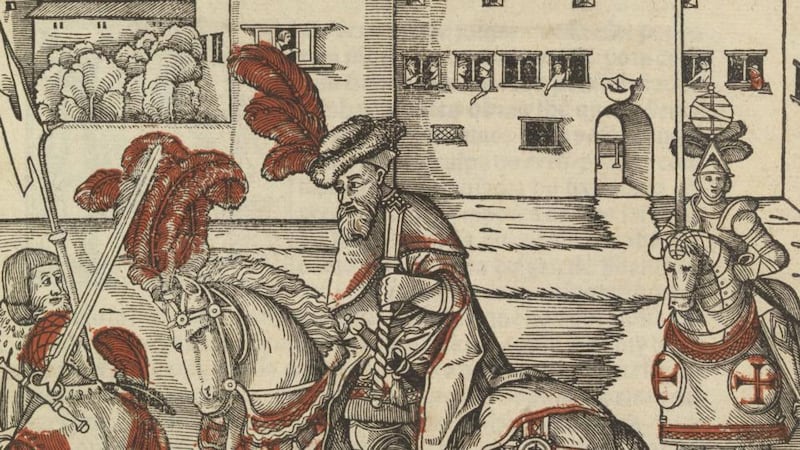
T is for Travel
.
On display are a number of books and pamphlets, including a 16th century Italian book with an early map of
Ireland
, shown on its side. There is also a 1601 pamphlet, which is an early and fascinating example of ghost-writing. “A new and large discourse of the Travels of Sir
Anthony Shirley
, by sea and over land to the Persian Empire, wherein are related many strange and wonderful accidents and also the description and conditions of those countries and people he passed by. Written by William Perry Gentleman, who accompanied Sir Anthony on this travels.”
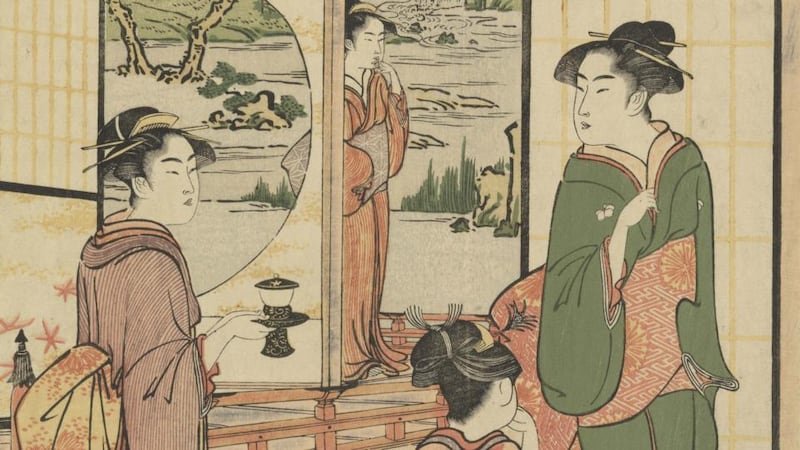
U is for Ukiyo-e.
The name given to Japanese woodblock pictures. On show are two 18th century prints, one showing a white cat in a tea house. They are two of the library’s collection of 450 ukiyo-e prints.
V is for Vellum,
and it refers specifically to the skin of a young calf. It was used for bookbinding and for illuminated pages, and there are two 20th century examples of English illuminated vellum on show.
W is for Wings.
We’ve never seen angels, but they are usually imagined to have wings. A Russian icon shows John the Baptist as an angel in the desert.
X is for X.
Or rather, it's for the Roman numeral X, which stands for 10. Featuring this little-used letter as the start of a word was obviously a challenge for the team of curators. They have come up the creative solution of playing cards, which were used for centuries in some form or another. Shown here are 17th century English cards depicting scenes from the 'Popish plot' of 1678.
Y is for Yurt,
the tent-like structure used by nomads for centuries. On show is a French engraving commissioned by the Chinese Qianlong emperor to mark his conquest of East Turkestan. It features a celebratory banqueting scene and a large ceremonial yurt, with a throne for the emperor.
Z is for Zodiac.
Astronomy remains important for religious purposes in Islam. One of the items on show is a 10th century Persian manuscript about astronomy, with drawings of constellations picked out in gold.
From Amulet to Zodiac, opens at the Chester Beatty Library on July 10th and runs until February 1st, 2015



















